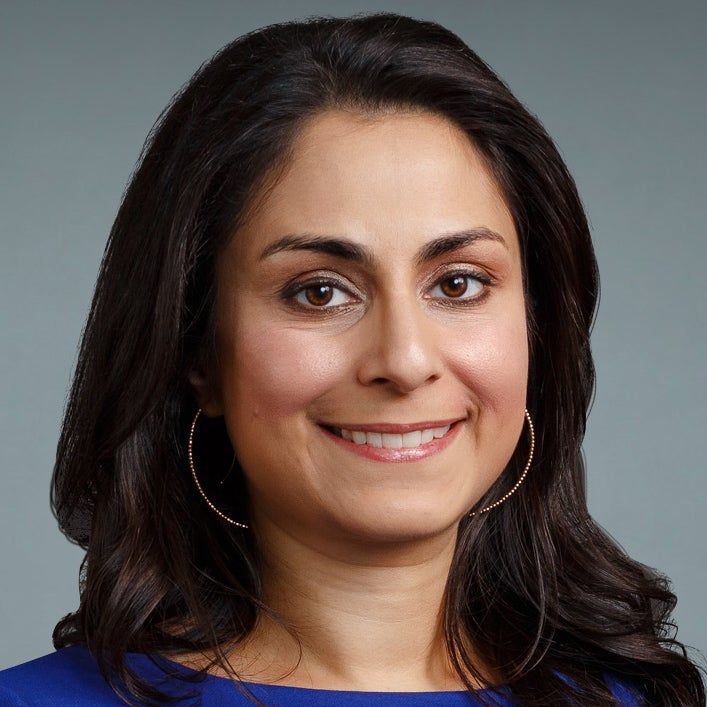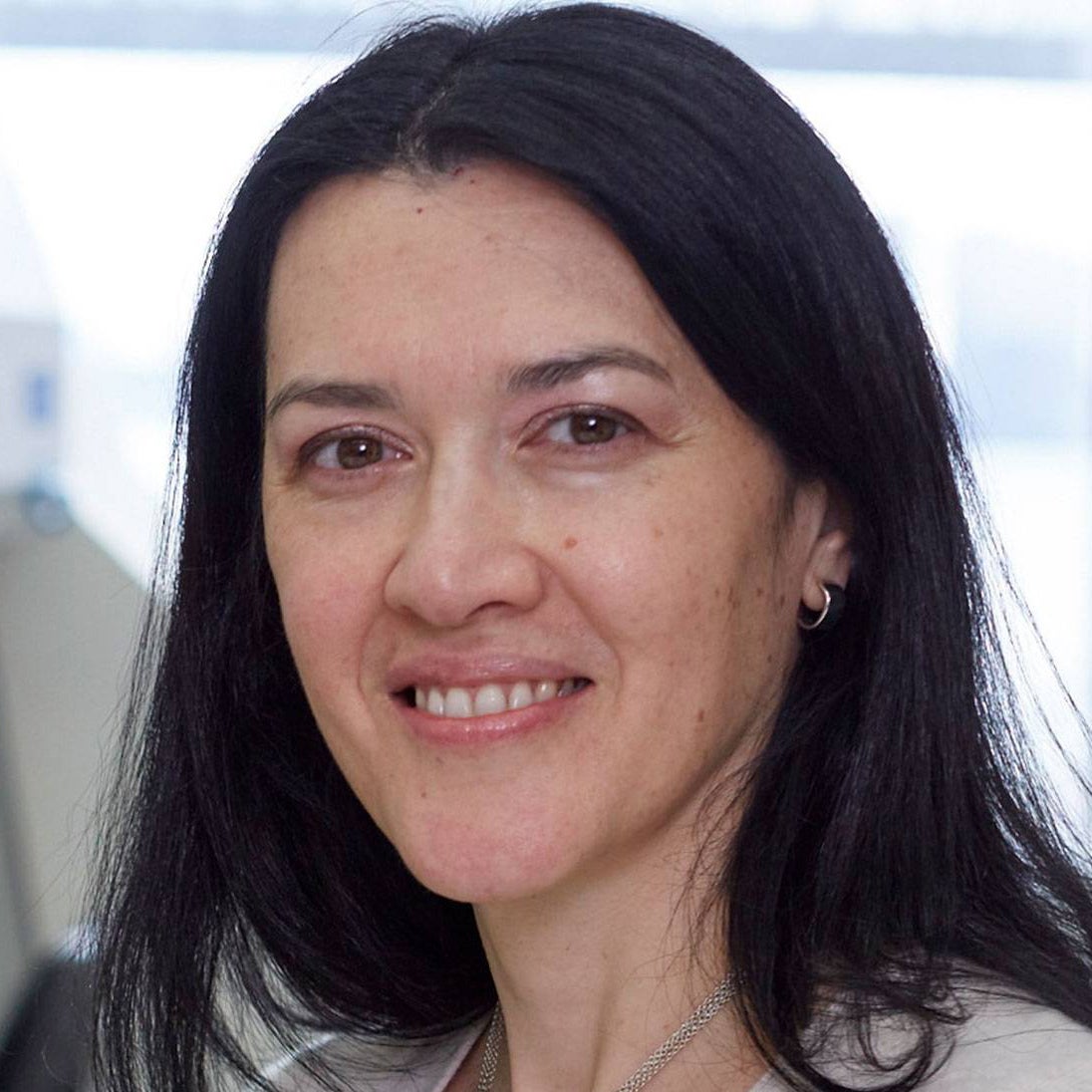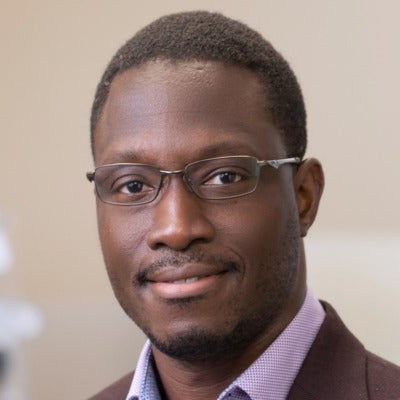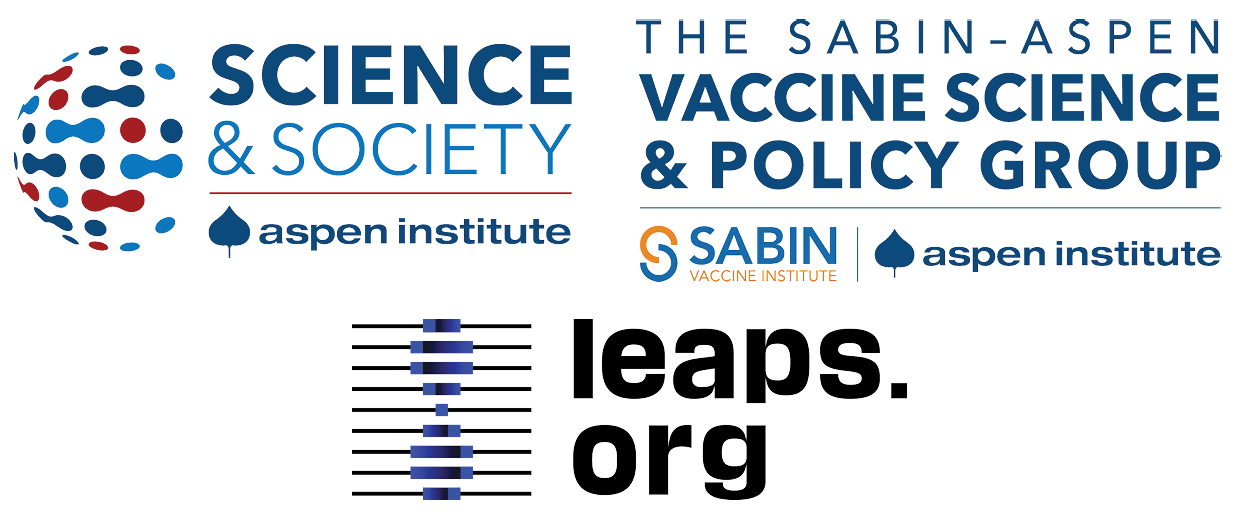Dec. 17th Event: The Latest on Omicron, Boosters, and Immunity
Kira Peikoff was the editor-in-chief of Leaps.org from 2017 to 2021. As a journalist, her work has appeared in The New York Times, Newsweek, Nautilus, Popular Mechanics, The New York Academy of Sciences, and other outlets. She is also the author of four suspense novels that explore controversial issues arising from scientific innovation: Living Proof, No Time to Die, Die Again Tomorrow, and Mother Knows Best. Peikoff holds a B.A. in Journalism from New York University and an M.S. in Bioethics from Columbia University. She lives in New Jersey with her husband and two young sons. Follow her on Twitter @KiraPeikoff.

The Omicron variant poses new uncertainty for the vaccines, which four leading experts will address during our virtual event on December 17th, 2021.
This virtual event will convene leading scientific and medical experts to discuss the most pressing questions around the new Omicron variant, including what we know so far about its ability to evade COVID-19 vaccines, the role of boosters in eliciting heightened immunity, and the science behind variants and vaccines. A public Q&A will follow the expert discussion.
EVENT INFORMATION:
Date: Friday Dec 17, 2021
2:00pm - 3:30pm EST

Dr. Céline Gounder, MD, ScM, is the CEO/President/Founder of Just Human Productions, a non-profit multimedia organization. She is also the host and producer of American Diagnosis, a podcast on health and social justice, and Epidemic, a podcast about infectious disease epidemics and pandemics. She served on the Biden-Harris Transition COVID-19 Advisory Board.
 Dr. Theodora Hatziioannou, Ph.D., is a Research Associate Professor in the Laboratory of Retrovirology at The Rockefeller University. Her research includes identifying plasma samples from recovered COVID-19 patients that contain antibodies capable of neutralizing the SARS-CoV-2 coronavirus.
Dr. Theodora Hatziioannou, Ph.D., is a Research Associate Professor in the Laboratory of Retrovirology at The Rockefeller University. Her research includes identifying plasma samples from recovered COVID-19 patients that contain antibodies capable of neutralizing the SARS-CoV-2 coronavirus.

Dr. Onyema Ogbuagu, MBBCh, is an Associate Professor at Yale School of Medicine and an infectious disease specialist who treats COVID-19 patients and leads Yale’s clinical studies around COVID-19. He ran Yale’s trial of the Pfizer/BioNTech vaccine.

Dr. Eric Topol, M.D., is a cardiologist, scientist, professor of molecular medicine, and the director and founder of Scripps Research Translational Institute. He has led clinical trials in over 40 countries with over 200,000 patients and pioneered the development of many routinely used medications.
This event is the fourth of a four-part series co-hosted by Leaps.org, the Aspen Institute Science & Society Program, and the Sabin–Aspen Vaccine Science & Policy Group, with generous support from the Gordon and Betty Moore Foundation and the Howard Hughes Medical Institute.

Kira Peikoff was the editor-in-chief of Leaps.org from 2017 to 2021. As a journalist, her work has appeared in The New York Times, Newsweek, Nautilus, Popular Mechanics, The New York Academy of Sciences, and other outlets. She is also the author of four suspense novels that explore controversial issues arising from scientific innovation: Living Proof, No Time to Die, Die Again Tomorrow, and Mother Knows Best. Peikoff holds a B.A. in Journalism from New York University and an M.S. in Bioethics from Columbia University. She lives in New Jersey with her husband and two young sons. Follow her on Twitter @KiraPeikoff.
A woman gives a DNA sample at a Pheramor-sponsored event.
Brittany Barreto first got the idea to make a DNA-based dating platform nearly 10 years ago when she was in a college seminar on genetics. She joked that it would be called GeneHarmony.com.
Pheramor and startups, like DNA Romance and Instant Chemistry, both based in Canada, claim to match you to a romantic partner based on your genetics.
The idea stuck with her while she was getting her PhD in genetics at Baylor College of Medicine, and in March 2018, she launched Pheramor, a dating app that measures compatibility based on physical chemistry and what the company calls "social alignment."
"I wanted to use genetics and science to help people connect more. Our world is so hungry for connection," says Barreto, who serves as Pheramor's CEO.
With the direct-to-consumer genetic testing market booming, more and more companies are looking to capitalize on the promise of DNA-based services. Pheramor and startups, like DNA Romance and Instant Chemistry, both based in Canada, claim to match you to a romantic partner based on your genetics. It's an intriguing alternative to swiping left or right in hopes of finding someone you're not only physically attracted to but actually want to date. Experts say the science behind such apps isn't settled though.
For $40, Pheramor sends you a DNA kit to swab the inside of your cheek. After you mail in your sample, Pheramor analyzes your saliva for 11 different HLA genes, a fraction of the more than 200 genes that are thought to make up the human HLA complex. These genes make proteins that regulate the immune system by helping protect against invading pathogens.
It takes three to four weeks to get the results backs. In the meantime, users can still download the app and start using it before their DNA results are ready. The app asks users to link their social media accounts, which are fed into an algorithm that calculates a "social alignment." The algorithm takes into account the hashtags you use, your likes, check-ins, posts, and accounts you follow on Facebook, Twitter, and Instagram.
The DNA test results and social alignment algorithm are used to calculate a compatibility percentage between zero and 100. Barreto said she couldn't comment on how much of that score is influenced by the algorithm and how much comes from what the company calls genetic attraction. "DNA is not destiny," she says. "It's not like you're going to swab and I'll send you your soulmate."
Despite its name, Pheramor doesn't actually measure pheromones, chemicals released by animals that affect the behavior of others of the same species. That's because human pheromones have yet to be identified, though they've been discovered throughout the animal kingdom in moths, mice, rabbits, pigs, and many other insects and mammals. The HLA genes Pheramor analyzes instead are the human version of the major histocompatibility complex (MHC), a gene group found in many species.
The connection between HLA type and attraction goes back to the 1970s, when researchers found that inbred male mice preferred to mate with female mice with a different MHC rather than inbred female mice with similar immune system genes. The researchers concluded that this mating preference was linked to smell. The idea is that choosing a mate with different MHC genes gives animals an evolutionary advantage in terms of immune system defense.
The couples who had more dissimilar HLA types reported a more satisfied sex life and satisfied partnership, but it was a small effect.
In the 1990s, Swiss scientists wanted to see if body odor also had an effect on human attraction. In a famous experiment known as the "sweaty T-shirt study", they recruited 49 women to sniff sweaty, unwashed T-shirts from 44 men and put each in a box with a smelling hole and describe the odors of every shirt. The study found that women preferred the scents of T-shirts worn by men who were immunologically different from them compared to men whose HLA genes were similar to their own.
"The idea is, if you are very similar with your partner in HLA type then your offspring is similar in terms of HLA. This reduces your resistance against pathogens," says Illona Croy, a psychologist at the Technical University of Dresden who has studied HLA type in relation to sexual attraction in humans.
In a 2016 study Pheramor cites on its website, Croy and her colleagues tested the HLA types of 250 couples—all of them university students—and asked them how satisfied they were with their partnerships, with their sex lives, and with the odors of their partners. The couples who had more dissimilar HLA types reported a more satisfied sex life and satisfied partnership, but Croy cautions that it was a small effect. "It's not like they were super satisfied or not satisfied at all. It's a slight difference," she says.
Croy says we're much more likely to choose a partner based on appearance, sense of humor, intelligence and common interests.
Other studies have reported no preference for HLA difference in sexual attraction. Tristram Wyatt, a zoologist at the University of Oxford in the U.K. who studies animal pheromones, says it's been difficult to replicate the original T-shirt study. And one of the caveats of the original study is that women who were taking birth control pills preferred men who were more immunologically similar.
"Certainly, we learn to really like the smell of our partners," Wyatt says. "Whether it's the reason for choosing them in the first place, we really don't know."
Wyatt says he's skeptical of DNA-based dating apps because there are many subtypes of HLA genes, meaning there's a fairly low chance that your HLA type and your romantic partner's would be an exact match, anyway. It's why finding a suitable match for a bone marrow transplant is difficult; a donor's HLA type has to be the same as the recipient's.
"What it means is that since we're all different, it's hard statistically to say who the best match will be," he says.
DNA-based dating apps haven't yet gone mainstream, but some people seem willing to give them a try. Since Pheramor's launch a little over a year ago, about 10,000 people have signed up to use the app, about half of which have taken the DNA test, Barreto says. By comparison, an estimated 50 million people use Tinder, which has been around since 2012, and about 40 million people are on Bumble, which was released in 2014.
In April, Barreto launched a second service, this one for couples, called WeHaveChemistry.com. A $139 kit includes two genetic tests, one for you and your partner, and a detailed DNA report on your sexual compatibility.
Unlike the Phermor app, WeHaveChemistry doesn't provide users with a numeric combability score but instead makes personalized recommendations based on your genetic results. For instance, if the DNA test shows that your HLA genes are similar, Barreto says, "We might recommend pheromone colognes, working out together, or not showering before bed to get your juices running."
Despite her own research on HLA and sexual compatibility, Croy isn't sure how knowing HLA type will help couples. However, some researchers are doing studies on whether HLA types are related to certain cases of infertility, and this is where a genetic test might be very useful, says Croy.
"Otherwise, I think it doesn't matter whether we're HLA compatible or not," she says. "It might give you one possible explanation about why your sexual life isn't as satisfactory as it could be, but there are many other factors that play a role."
On left, the fungus (the whitish, fluffy material) of the Fungi Mutarium growing within the agar cups and degrading the plastic (the black/gray material in the center).
Between the ever-growing Great Pacific Garbage Patch, the news that over 90% of plastic isn't recycled, and the likely state of your personal trash can, it's clear that the world has a plastic problem.
Scientists around the world have continued to discover different types of fungus that can degrade specific types of plastic.
We now have 150 million tons of plastic in our oceans, according to estimates; by 2050, there could be more plastic than fish. And every new batch of trash compounds the issue: Plastic is notorious for its longevity and resistance to natural degradation.
The Lowdown
Enter the humble mushroom. In 2011, Yale students made headlines with the discovery of a fungus in Ecuador, Pestalotiopsis microspora, that has the ability to digest and break down polyurethane plastic, even in an air-free (anaerobic) environment—which might even make it effective at the bottom of landfills. Although the professor who led the research trip cautioned for moderate expectations, there's an undeniable appeal to the idea of a speedier, cleaner, side effect-free, and natural method of disposing of plastic.
A few years later, this particular application for fungus got a jolt of publicity from designer Katharina Unger, of LIVIN Studio, when she collaborated with the microbiology faculty at Utrecht University to create a project called the Fungi Mutarium. They used the mycelium—which is the threadlike, vegetative part of a mushroom—of two very common types of edible mushrooms, Pleurotus ostreatus (Oyster mushrooms) and Schizophyllum commune (Split gill mushrooms). Over the course of a few months, the fungi fully degraded small pieces of plastic while growing around pods of edible agar. The result? In place of plastic, a small mycelium snack.
Other researchers have continued to tackle the subject. In 2017, scientist Sehroon Khan and his research team at the World Agroforestry Centre in Kunming, China discovered another biodegrading fungus in a landfill in Islamabad, Pakistan: Aspergillus tubingensis, which turns out to be capable of colonizing polyester polyurethane (PU) and breaking it down it into smaller pieces within the span of two months. (PU often shows up in the form of packing foam—the kind of thing you might find cushioning a microwave or a new TV.)
Next Up
Utrecht University has continued its research, and scientists around the world have continued to discover different types of fungus that can degrade different, specific types of plastic. Khan and his team alone have discovered around 50 more species since 2017. They are currently working on finding the optimal conditions of temperature and environment for each strain of fungus to do its work.
Their biggest problem is perhaps the most common obstacle in innovative scientific research: Cash. "We are developing these things for large-scale," Khan says. "But [it] needs a lot of funding to get to the real application of plastic waste." They plan to apply for a patent soon and to publish three new articles about their most recent research, which might help boost interest and secure more grants.
Is there a way to get the fungi to work faster and to process bigger batches?
Khan's team is working on the breakdown process at this point, but researchers who want to continue in Unger's model of an edible end product also need to figure out how to efficiently and properly prepare the plastic input. "The fungi is sensitive to infection from bacteria," Unger says—which could turn it into a destructive mold. "This is a challenge for industrialization—[the] sterilization of the materials, and making the fungi resistant, strong, and faster-growing, to allow for a commercial process."
Open Questions
Whether it's Khan's polyurethane-chomping fungus or the edible agar pods from the Fungi Mutarium, the biggest question is still about scale. Both projects took several months to fully degrade a small amount of plastic. That's much shorter than plastic's normal lifespan, but still won't be enough to keep up with the global production of plastic. Is there a way to get the fungi to work faster and to process bigger batches?
We'd also need to figure out where these plastic recyclers would live. Could individuals keep a small compost-like heap, feeding in their own plastic and harvesting the mushrooms? Or could this be a replacement for local recycling centers?
There are still only these few small experiments for reference. But taken together, they suggest a fascinating future for waste disposal: An army of mycelium chewing quietly and methodically through our plastic bags and foam coffee cups—and potentially even creating a new food source along the way. We could have our trash and eat it, too.

